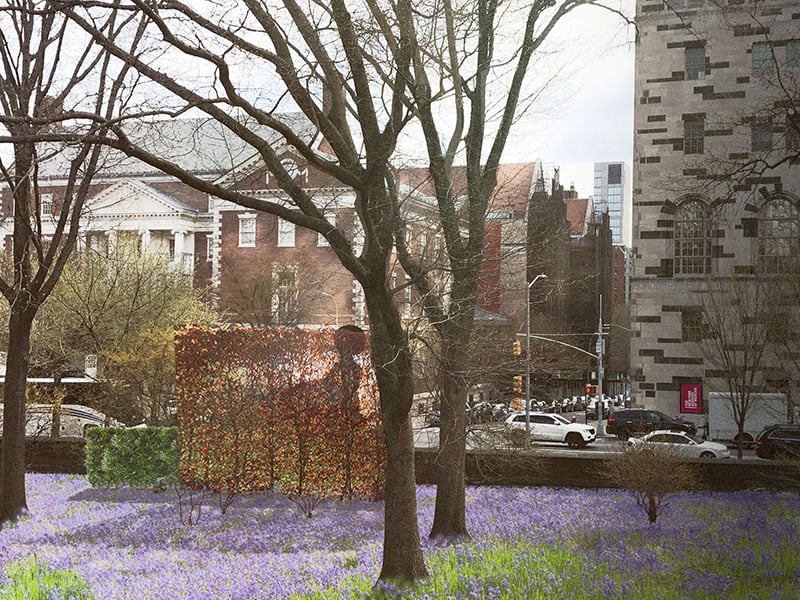
For the activists who had been campaigning for years to remove a New York City monument to J. Marion Sims, the 19th-century doctor who made his gynecological advances by experimenting on enslaved black women, October 5 should have been a triumph. The Sims statue was gone from its perch in Central Park, and the city was poised to select a replacement proposal from one of four esteemed black artists.
Instead, an event that night ignited further controversy, as a panel of experts voted in favor of the piece designed by the prominent artist Simone Leigh, whose work has recently been shown at the Solomon R. Guggenheim Museum and the Whitney Museum, despite vocal support from some community members for the work of Yonkers-based artist Vinnie Bagwell.
Following the contentious vote, culture commissioner Tom Finkelpearl reassured those assembled that the panel’s opinion was advisory, not binding.
Today, the city announced that it is bowing to pressure from the East Harlem community: Leigh has withdrawn her proposal following the backlash, and Bagwell will design the new monument.
“I greatly appreciate that my proposal was selected by the committee. However, I am aware that there is significant community sentiment for another proposal,” Leigh said in a statement. “Since this is a public monument in their neighborhood, I defer to them.”
“I want to express my heartfelt thanks to the community-at-large for their collective advocacy of my work,” Bagwell said in her own statement.
Vinnie Bagwell, Victory Beyond Sims (rendering). Courtesy of the artist.
For the project, Bagwell proposed an 18-foot angel statue titled Victory Over Sims, featuring relief carvings of black women’s faces on the skirt of a figure. In one hand, the angel-like woman holds the staff of Asclepius, the entwined snake symbol for the field of medicine. In the other burns an eternal flame.
Leigh’s equally tall piece, After Anarcha, Lucy, Betsey, Henrietta, Laure, and Anonymous, would have honored Anarcha, Lucy, and Betsey, the only Sims subjects whose names were recorded; Henrietta Lacks, the African American woman whose cancer cells were used after her death for groundbreaking research; and Laure, the model for the black woman in Édouard Manet’s Olympia.
“Formally and aesthetically, [Victory Over Sims is] a confusing piece of art,” Antwaun Sargent, a member of the voting committee, wrote on Twitter. “Everyone felt that Simone’s sculpture was unique, engaging, would stand the test of time.”
But his opinion fell on deaf ears at Saturday’s meeting, where a hostile exchange broke out after Leigh’s proposal was announced as the winner. “We feel very betrayed,” M. Ndigo Washington, a member of the Beyond Sims Committee, a community coalition, told Hyperallergic. “You continue to ask for our opinion, you continue to ask to participate in a process, a process that now feels rigged.”
Following an open call for proposals announced in December, Bagwell, Leigh, Kehinde Wiley, and Wangechi Mutu were announced as the finalists in February. Bagwell, a local artist born in Yonkers, was the only artist to attend the event on Saturday, and won the crowd over in part because she was competing with international art-world superstars.
“A fundamental part of the problem was that the [Department of Cultural Affairs], on their own initiative, put contemporary-art-world-type, famous artists in the pool, who didn’t work as hard as Vinnie or even bother to show up [to the event],” Todd Fine, president of the Washington Street Advocacy Group, told Hyperallergic.
Bagwell, a self-described “untutored artist,” began sculpting in 1993. Her first public commission was an Ella Fitzgerald statue for the city of Yonkers in 1996. In March, Governor Andrew Cuomo commissioned her to create a statue of Sojourner Truth for the Hudson State Historic Park in Highland, New York.
Now that Bagwell has been named as the winner of the commission, “the city will work with [her] in collaboration with local residents to refine the design,” the Department of Cultural Affairs said in a statement. The sculpture is expected to be completed in 2021.